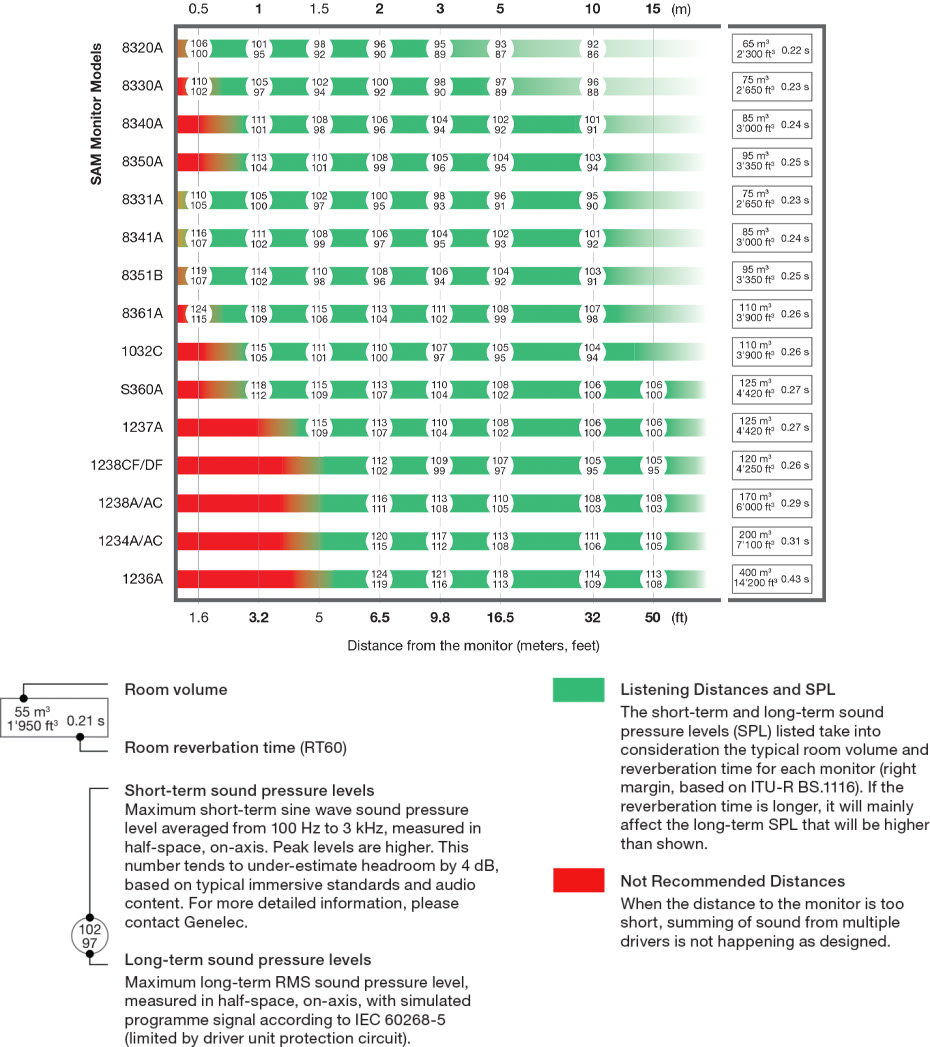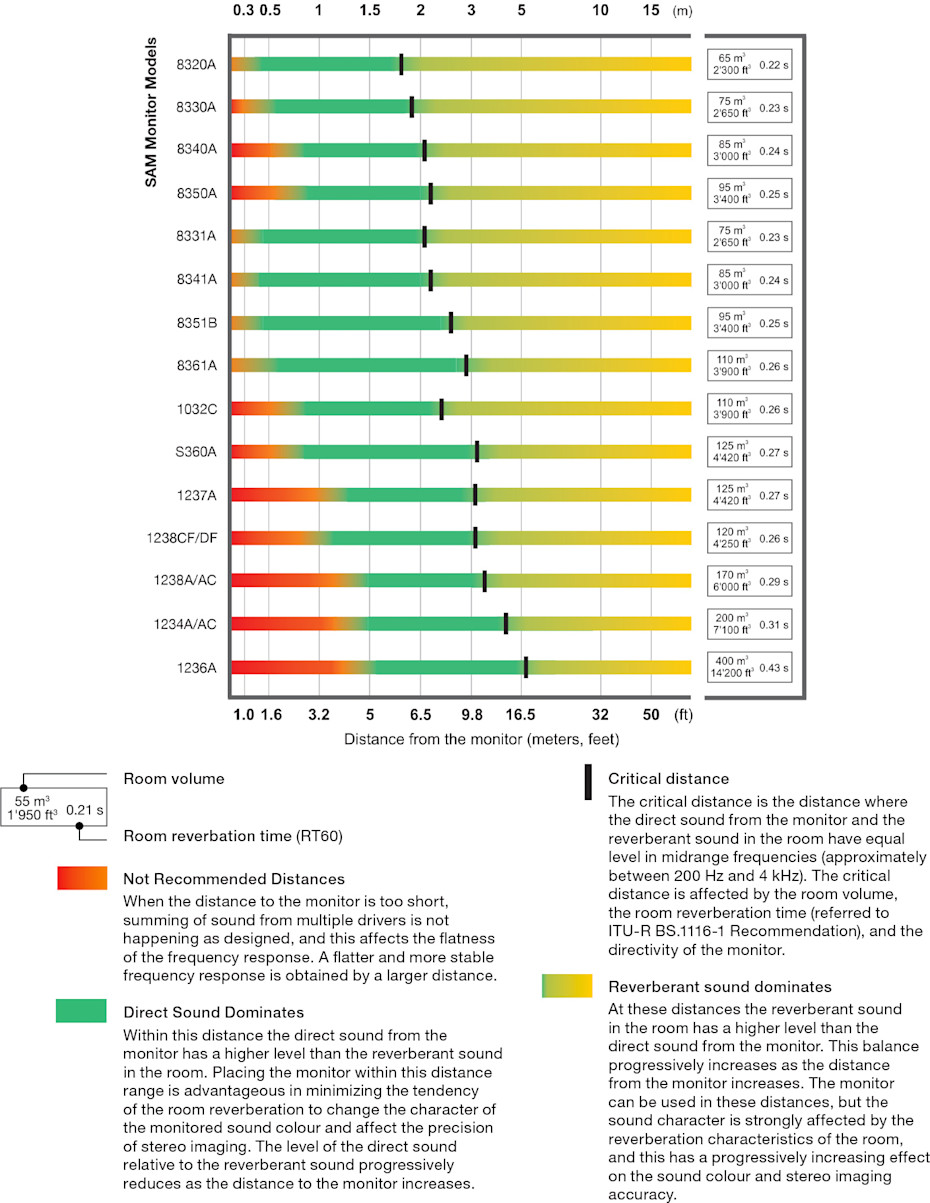How To Select The Correct Monitors

A monitor, by definition, observes, checks, controls, warns or keeps a continuous record of something. An audio monitor, studio monitor or monitoring speaker is more than just a good-sounding loudspeaker. It is a device used in the process of recording, mixing or broadcasting audio in any environment where accurate listening is needed. A monitor is a professional tool.
A reference monitor's task is to reveal the truth of the source which is being monitored. It must not add anything to nor remove nor mask anything. Such a monitor should be set up in an optimal position in the room with minimised influences from its environment. What we actually hear is the combination of our listening ability, the monitor’s performance and the room's acoustics.
Sound Basics
Sound is ultimately pressure which exists in a sequence of waves which propagates through compressible media such as air or water. Sound travels approximately 344 m/s (1130 ft/s). It takes 3 ms for sound to travel 1 metre (3,3 ft).
In free-field conditions (no walls, floor, or ceiling) the sound volume drops 6 dB when the distance doubles.
| Distance | Sound Level | Volume Drop |
|---|---|---|
| 1 m | 100 dB | 0 dB |
| 2 m | 94 dB | -6 dB |
| 4 m | 88 dB | -12 dB |
Sound level increases by 3 dB when the amplifier power doubles.
| Amp Power | Sound Level | Volume Increase |
|---|---|---|
| 100 W | 85 dB | 0 dB |
| 200 W | 88 dB | +3 dB |
| 400 W | 91 dB | +6 dB |
The industry standard reference sound pressure level (SPL) for cinema and TV sound production work is between 82 and 85 dB at the listening position.
Frequency Spectrum
The frequency spectrum of an electrical signal is, by definition of Collins online dictionary, "the distribution of the amplitudes and phases of each frequency component against frequency". The audible frequency spectrum covers 10 octaves (up to 40 Hz, 80, 160, 320, 640, 1’280, 2’560, 5’120, 10’240, 20’480 Hz) which can conveniently divide the spectrum as follows.
| Subsonic bass frequencies | below 16 Hz | Not audible for humans. |
| Very low frequencies | 16 Hz – 40 Hz 40 Hz – 80 Hz |
Lowest audible octave for humans. Music low frequencies, kick drums, bass instruments |
| Low frequencies | 80 Hz – 160 Hz 160 Hz – 320 Hz |
Low register of a grand piano. Middle C of a piano. |
| Midrange frequencies | 320 Hz – 1’280 Hz | Music midrange frequencies |
| Upper midrange frequencies | 1’280 Hz – 2’560 Hz 2’560 Hz – 5’120 Hz |
Low-order harmonics of most instruments. The ear is the most sensitive in this range. |
| High frequencies | 5’120 Hz – 10’240 Hz | Brightness and harmonics |
| Extremely high frequencies | 10’240 Hz – 20’480 Hz | Highest harmonics. Inaudible to humans above 20 kHz |
Sound Radiation
At low frequencies, typically below 200 Hz, monitors radiate omnidirectionally. This means that the same sound pressure is created towards any direction from the monitor. At higher frequencies, the radiation becomes directional: midrange frequencies radiate in a hemispherical pattern and very high frequencies can radiate in a beam- or ray-like pattern. Genelec designs monitors with controlled directivity and this minimises the changes in the directivity across frequencies.
Pictured below is the soundwave propagation in various frequency ranges.

Read more about the importance of radiation for loudspeaker placement in the chapter Radiation Space under the section Monitor Placement.
Choosing Monitors
Genelec recommends studio monitors based on typical listening distances and sound pressure levels(SPL). A matching subwoofer exists for each of our monitor model and size. We offer tips for finding a correct system setup in this internet-based guide or you can ask your local Genelec dealer or distributor for help with your individual situation. Selecting the correct monitoring speakers starts from defining your listening distance and identifying your optimal listening area.
Sound Pressure Levels
The distance between you and your monitors is crucial, both in terms of performance and the SPL delivered to the listening position. Use the table here to compare the SPL capabilities of Genelec monitors. Our dedicated dealers and distributors are able to help you further in your selection process for your unique space, these are just general guidelines.

Direct Sound Dominance
The balance between direct and reverberant sound has a profound influence on how your mixes will sound. The table shown will help you identify the optimum range of listening distances for the Genelec range.

Product Performance
In the Product Performance -tables we provide some recommendations based on the room volumes as to which Genelec products would best work in which size rooms.



